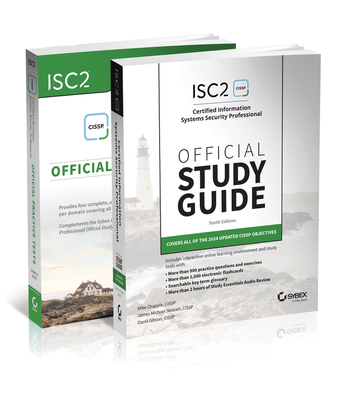Continuous Integration with Jenkins for Developers and DevOps Initiatives Training in Fort Lauderdale
Enroll in or hire us to teach our Continuous Integration with Jenkins for Developers and DevOps Initiatives class in Fort Lauderdale, Florida by calling us @303.377.6176. Like all HSG
classes, Continuous Integration with Jenkins for Developers and DevOps Initiatives may be offered either onsite or via instructor led virtual training. Consider looking at our public training schedule to see if it
is scheduled: Public Training Classes
Provided there are enough attendees, Continuous Integration with Jenkins for Developers and DevOps Initiatives may be taught at one of our local training facilities.
|
We offer private customized training for groups of 3 or more attendees.
|
||
Course Description |
||
| This course will provide students with an understanding of the
principles of continuous integration, and the knowledge of how to
implement continuous integration with automated test execution using
Jenkins. Students will use a local copy of Jenkins and to create and
run jobs, link to a version control system, run automated testing and
generate development reports. --- Jenkins is an award-winning
application that monitors executions of repeated jobs, such as building
a software project or jobs run by cron. Among those things, current
Jenkins focuses on the following two jobs: - Building/testing software
projects continuously. Jenkins provides an easy-to-use so-called
continuous integration system, making it easier for developers to
integrate changes to the project, and making it easier for users to
obtain a fresh build. The automated, continuous build increases
development productivity. - Monitoring executions of externally-run
jobs, such as cron jobs and procmail jobs, even those that are run on a
remote machine. For example, with cron, all you receive is regular
e-mails that capture the output, and it is up to you to look at them
diligently and notice when it broke. Jenkins keeps those outputs and
makes it easy for you to notice when something is wrong.
Course Length: 2 Days
Course Tuition: $1090 (US) |
||
Prerequisites |
|
| Attendees should have familiarity Java development practices. | |
Course Outline |
|
Chapter 1. Introduction to Continuous Integration, Continuous Delivery and Jenkins-CI
- Foundation of Agile AppDev
- XP Flow
- Extreme Programming
- Agile Development
- What is Continuous Integration
- What is Continuous Integration (cont'd)
- Typical Setup for Continuous Integration
- Setup Notes for Continuous Integration
- CI with Artifact Management
- What is Continuous Delivery?
- Why Continuous Delivery?
- DevOps and Continuous Delivery
- Continuous Delivery Challenges
- Continuous Delivery vs Continuous Deployment
- Jenkins Continuous Integration
- Jenkins Features
- Running Jenkins
Summary
Chapter 2. Installing and Running Jenkins
- Downloading and Installing Jenkins
- Running Jenkins as a Stand-Alone Application
- Running Jenkins as a Stand-Alone Application (cont'd)
- Running Jenkins on an Application Server
- The Jenkins Home Folder
- Installing Jenkins as a Windows Service
- Initial Configuration
- Configuration Wizard
- Configuration Wizard (cont'd)
- Configuring Tools
- Configuring Tools - Best Practices
- Logging in Jenkins
- Custom Log Recorders
Summary
Chapter 3. Job Types in Jenkins
- Introduction
- Different types of Jenkins Items
- Different types of Jenkins Items (cont'd)
- Configuring Source Code Management(SCM)
- Working with Subversion
- Working with Subversion (cont'd)
- Working with Git
- Storing Credentials
- Service Accounts
- Storing Credentials (cont'd)
- Build Triggers
- Schedule Build Jobs
- Polling the SCM
- Polling vs Triggers
- Maven Build Steps
Summary
Chapter 4. Advanced Jobs
- Parameterized Jobs
- Built-in Environment Variables
- Parameter Types
- Defining Parameters
- Using Parameters / Environment Variables
- Parameters in the config.xml File
- Launching a Build with Parameters
- Configuration Matrix
- Configuration Matrix – Example
- Defining Configuration Matrix
- Monitoring External Jobs
Summary
Chapter 5. Non-Java Jenkins Jobs
- Jenkins Jobs
- Non-Java Jobs
- Building .NET Projects with Jenkins
- Installing MSTest Plugin in Jenkins
- Configuring the MSBuild Plugin
- Creating a Jenkins Job and Specify a Build Step
- Specifying a Step for Running Unit Tests
- Adding a Step for Deploying the .NET Project
- Building a Node.js Application with Jenkins
- Node.js Plugin
- Provides direct Pipeline supportBuilding a C++ Project with Jenkins
- Executing PowerShell Scripts with Jenkins
Summary
Chapter 6. Template Jobs
- Template Jobs
- Template Jobs (Contd.)
- Template Jobs Plugin
- Template Jobs Plugin - config.xml
Summary
Chapter 7. Continuous Delivery and the Jenkins Pipeline
- Continuous Delivery
- Continuous Delivery (cont'd)
- DevOps and Continuous Delivery
- Continuous Delivery Challenges
- Continuous Delivery with Jenkins
- The Pipeline Plugin
- The Pipeline Plugin (cont'd)
- Defining a Pipeline
- A Pipeline Example
- Pipeline Example (cont'd)
- Parallel Execution
- Creating a Pipeline
- Invoking the Pipeline
- Interacting with the Pipeline
- Pipeline vs Traditional Jobs
Conclusion
Chapter 8. Groovy DSL
- What is Groovy
- Groovy in Jenkins
- Comments in Groovy
- Data Types
- Identifiers
- Variables
- def
- String Interpolation
- Operators
- Ranges
- Conditional Statements
- Loops
- Lists
- Maps
- Exception Handling
- Methods
- Closures
- this Keyword
- Classes
- Static Methods
- Inheritance
- Abstract Classes
- Interfaces
- Generics
- Jenkins Script Console
- Extending with Shared Libraries
- Directory Structure
- Sample Groovy Code
- Defining Shared Libraries
- Using Shared Libraries
- Same Shared Library Usage Code
- Defining Global Variables
Summary
Chapter 9. Securing Jenkins
- Jenkins Security - Overview
- Jenkins Security
- Authentication
- Authorization
- Confidentiality
- Activating Security
- Configure Authentication
- Using Jenkins's Internal User Database
- Creating Users
- Authorization
- Matrix-Based Security
- Note – Create the Administrative User
- Project-based Matrix Authorization
- Project-Based Authentication
- Role Based Access Control
Conclusion
Chapter 10. Jenkins Plugins
- Introduction
- Jenkins Plugins - SCM
- Jenkins Plugins – Build and Test
- Jenkins Plugins – Analyzers
- Jenkins for Teams
- Installing Jenkins Plugins
Summary
Chapter 11. Distributed Builds with Jenkins
- Distributed Builds - Overview
- Distributed Builds – How?
- Agent Machines
- Configure Jenkins Master
- Configure Projects
Conclusion
Chapter 12. Containerized Builds
- Introduction to Docker
- Docker – Benefits
- Containers vs. Virtual Machines
- Running Jenkins in a Docker Container
- Delete Jenkins Container and Image
- Configuring Command Prompt to Connect to Docker
- Creating Docker Container from Jenkins Job
- Test Custom Image Created by a Jenkins Job
- The Jenkins Docker Build Step Plugin
- Ephemeral Build Agents
Summary
Chapter 13. The Jenkins API
- Remote Access API
- What you can do with the Jenkins Remote API
- Remote API and CSRF Protection – API Token
- Remote API and CSRF Protection – Crumb
- Configure Jobs to Support the Jenkins Remote API
- Making Remote API Calls
- Example - Advanced REST Client
- Example – cURL
- Jenkins CLI
- Configure Jenkins to use CLI
- Download and Use Jenkins CLI
Summary
Chapter 14. Scripting
- Introduction to Scripting
- Benefits of Scripting
- The Jenkins Script Console
- Calling Scripts using cURL
- Sample Scripts
- Calling Groovy Scripts from a Jenkins Job
- Jenkins API
Summary
Chapter 15. User Interface Options
- User Interface Options
- Customizing the UI with CSS
- The User Content Folder
- Using the User Content Folder and Simple Theme Plugin
- Writing a Jenkins Plugin
- Modify settings.xml
- Generate Boilerplate Code for Custom Jenkins Plugin
- Modify pom.xml
- Package and Deploy the Plugin
- The Blue Ocean Plugin
- Blue Ocean Plugin Features
- New modern user experience
- Advanced Pipeline visualizations with built-in failure diagnosis
- Branch and Pull Request awareness
- Personalized View
Summary
Chapter 16. Best Practices for Jenkins
- Best Practices - Secure Jenkins
- Best Practices - Users
- Best Practices - Backups
- Best Practices - Reproducible Builds
- Best Practices - Testing and Reports
- Best Practices - Large Systems
- Best Practices - Distributed Jenkins
- Best Practices - Summary
Lab Exercises
Lab 1. Configure Tools in Jenkins
Lab 2. Create a Jenkins Job
Lab 3. Advanced Jobs
Lab 4. Template Jobs
Lab 5. Node.js based Jenkins Job and Manual Approval
Lab 6. Create a Pipeline
Lab 7. Advanced Pipeline with Groovy DSL
Lab 8. Configure Jenkins Security
Lab 9. Optional - Ephemeral Build Agents with Docker
|
Course Directory [training on all levels]
Technical Training Courses
Software engineer/architect, System Admin ... Welcome!
- .NET Classes
- Agile/Scrum Classes
- AI Classes
- Ajax Classes
- Android and iPhone Programming Classes
- Azure Classes
- Blaze Advisor Classes
- C Programming Classes
- C# Programming Classes
- C++ Programming Classes
- Cisco Classes
- Cloud Classes
- CompTIA Classes
- Crystal Reports Classes
- Data Classes
- Design Patterns Classes
- DevOps Classes
- Foundations of Web Design & Web Authoring Classes
- Git, Jira, Wicket, Gradle, Tableau Classes
- IBM Classes
- Java Programming Classes
- JBoss Administration Classes
- JUnit, TDD, CPTC, Web Penetration Classes
- Linux Unix Classes
- Machine Learning Classes
- Microsoft Classes
- Microsoft Development Classes
- Microsoft SQL Server Classes
- Microsoft Team Foundation Server Classes
- Microsoft Windows Server Classes
- Oracle, MySQL, Cassandra, Hadoop Database Classes
- Perl Programming Classes
- Python Programming Classes
- Ruby Programming Classes
- SAS Classes
- Security Classes
- SharePoint Classes
- SOA Classes
- Tcl, Awk, Bash, Shell Classes
- UML Classes
- VMWare Classes
- Web Development Classes
- Web Services Classes
- Weblogic Administration Classes
- XML Classes
Business Training Courses
Project Managers, Business Analysts, Paralegals ... Welcome!
Upcoming Classes
Gain insight and ideas from students with different perspectives and experiences.






